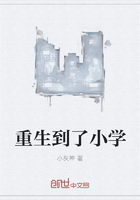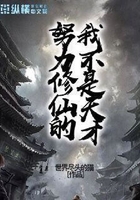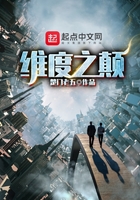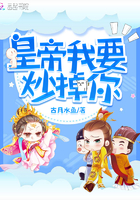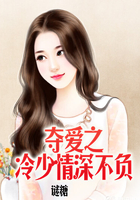Mother-of-three Zhu agreed and said: “Life was hard for me and my family because ofthe low payment I received as a teacher but I always believed I could conquer my difficultieswith my own two hands.”
The Red Cross Society of China also provides a platform for volunteers and sponsors tooffer guidance to laid-off teachers, said Liu Xuanguo, deputy secretary-general of the society.
“It is important that these sacked teachers know what they have done and what they are ableto do in the future. They need to know people are concerned about them and want to help tochange their lives,” he said.
The Bringing Hope campaign in 2009 received more than 5 million yuan in donations,which is being collected by the society and will be used to set up more programs to helpteachers improve their skills or develop new ones, said Liu.
As China now has more qualified teachers to send from the city to impoverished ruralareas, the need for substitutes is disappearing. However, education experts warn that thetransition will not be an easy one, mainly because most college graduates from urban areaswill have trouble understanding the “countryside psyche”.
“Young teachers just don’t understand what children are thinking about,” added Zhu.
“Also, I don’t think a lot of them will be able to bear the boring countryside life. Some ofthem who have tried left after just two or three years of teaching.
“Who can guarantee that all the certificated teachers will be able to withstand thetemptation of working in prosperous cities?”
Qian Yanfeng contributed to the story
March 10, 2010
Ancient cures for modern ills
Demand has peaked but outlook is healthy.
Cao Li reports from Hohhot.
Mida no longer herds sheep and cattle on sprawling grasslands; that part of her oncenomadiclife is firmly in the past.
Yet, two things will remain the same forever: The recurring pain in her leg and theancient Mongolian therapy she uses to soothe it.
After lighting a small piece of paper, the 57-year-old placed it in a tea cup andattached it to her left knee.
“It really works for my rheumatoid arthritis,” said Mida, who like most ethnicMongolians uses only her given name. “I only need to do it once a year when the grassseeds germinate in spring.”
Mida explained that the traditional treatment had been passed down to her from hermother, who in turn had learned it from her own mother.
“Once upon a time, when medical services were not so easily available, the herdsmenhad to be able to cure themselves,” she said, smiling.
The flaming tea cup is arguably one of the milder treatments. Other traditionalremedies include cutting open fingers to cure intestinal and stomach ailments caused bythe summer heat, rubbing white liquor on the breast, back and underarms to cure a fever,and putting fresh sheep innards on the stomach.
“My mother used to always boil raisins, sweet jujube and rock sugar to cure a cold,”
said Mida, who was 14 when she started shepherding livestock between Hohhot andBaotou in the Inner Mongolia autonomous region.
She and her 62-year-old husband,Huarihu, retired seven years ago whenauthorities ordered the suspension ofgrazing on an area of more than 87million hectares by the end of 2009,part of a nationwide campaign torestore the vegetation on grasslands.
The couple is among 400,000 formernomadic herders who have sinceresettled in towns and cities.
They now live in a home shapedlike a traditional Mongolian yurt (alarge tent) and rent most of the 90hectares they were allocated by thegovernment to tourist companies.
Although Mida is holding true toher ancestors’ healthcare rituals, someof which have lasted for more than2,000 years, she knows these ancientways are in danger of dying out. All ofher three children, one of whom livesin Shanghai, know little about herremedies, she said.
From humble beginnings
Mongolian traditional medicine originated when herdsmen began using naturalingredients and ancient tools to make ointments to cure injuries or ailments caused bybareback horse riding, fighting or harsh weather.
Historians suggest the system was established in earnest in the 1200s, with some ofthe therapies later combined with those from ancient Indian, Han Chinese and ethnicTibetan cultures.
The Mongolian system is based on natural sources, adequate rest and healthy eating.
Practitioners say their techniques have proven exceptionally effective in treating cardiovasculardiseases, bone injuries, chronic gynecological diseases and hemiplegia (partial paralysis).
Certain remedies are even credited with aiding cancer patients, as they unclog the“white and black veins”, energy channels that ethnic Mongolian people believe run throughthe body.
An hour’s drive from Mida’s grassland home in Baotou, Bai Shuzhen was relaxing ina waiting room at the Inner Mongolia Zhongmeng Hospital in Hohhot, which specializesin traditional Chinese and ethnic Mongolian medical treatment. She could not contain herexcitement as she talked about how her stomachache had disappeared just 60 minutes afterundergoing a Mongolian treatment.
“I have tried both Western medicine and traditional Chinese medicine but I find this(ethnic Mongolian remedy) works best for me,” said the 69-year-old retired Hohhot primaryschool teacher. “I never had any idea what Mongolian medicine involved before today;neither did my family, friends or colleagues, even those who are ethnic Mongolian,” she said.
“All I’d heard was they were ancient remedies used by the nomadic groups,” she added.
Also in the waiting room was Jigelatu, who agreed to let China Daily reporters watchhis treatment for migraines. After hearing his name called, the 42-year-old was led intoanother room and seated before a doctor wrapped a towel tightly around his neck and cutopen his forehead.






